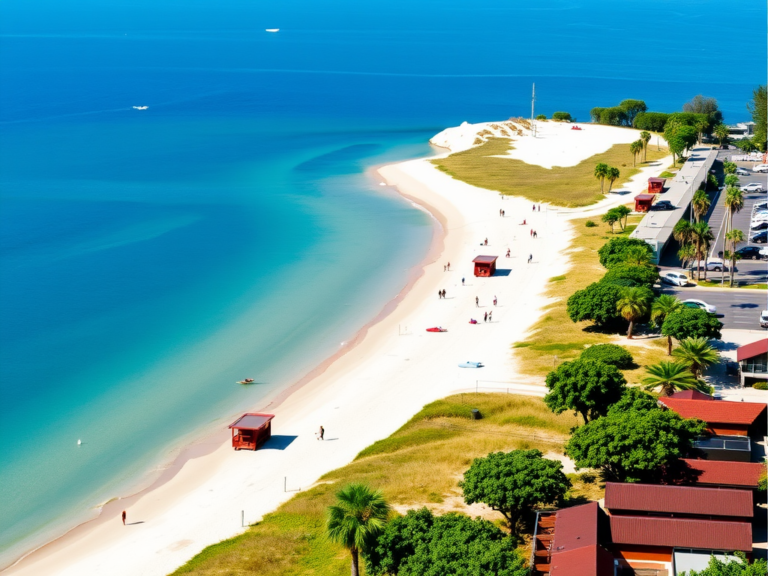Francis Scott Key Bridge: History, Facts & Must-Know Updates
The Francis Scott Key Bridge, an essential structure in the Baltimore metropolitan area, holds historical, economic, and infrastructural significance. Spanning the Patapsco River, it connects vital regions of Maryland, facilitating the movement of thousands of vehicles daily. Named after Francis Scott Key, the author of “The Star-Spangled Banner,” the bridge stands as a tribute to American heritage while serving as a crucial transportation link.
In this comprehensive guide, we will explore the history, construction, significance, and latest updates about the Francis Scott Key Bridge. Whether you’re a history enthusiast, a commuter, or simply curious about this engineering marvel, this article will provide in-depth insights into everything you need to know.
1. The History Behind the Francis Scott Key Bridge
The Francis Scott Key Bridge, often referred to as the Key Bridge, was named after Francis Scott Key, a Maryland-born lawyer, and poet best known for penning the lyrics of the U.S. national anthem. The bridge was constructed to address the increasing traffic demands in the Baltimore region and to provide an alternative route for vehicles bypassing downtown Baltimore.
The planning for the bridge began in the late 1960s as part of Maryland’s efforts to improve connectivity and reduce congestion. After years of development, it was officially opened to the public on March 23, 1977. The bridge became a vital part of the Baltimore Beltway (Interstate 695), playing a crucial role in the region’s transportation network.
2. Engineering and Construction of the Key Bridge
The Francis Scott Key Bridge is a continuous steel arch bridge, a popular design for large spans requiring structural strength and flexibility. Engineers chose this design to accommodate the high volume of vehicles and withstand the environmental challenges of the Patapsco River.
Key Features of the Bridge:
- Total Length: Approximately 1.6 miles (2.6 km)
- Main Span Length: 1,200 feet (366 meters)
- Clearance: 185 feet (56 meters) above the water
- Construction Material: Steel and concrete
- Traffic Capacity: Supports more than 11 million vehicles annually
The bridge’s foundation was designed to withstand extreme weather conditions, high winds, and marine traffic beneath it. The incorporation of safety mechanisms, seismic reinforcements, and advanced coatings has helped ensure its longevity over the decades.
3. Economic and Transportation Significance
The Francis Scott Key Bridge is more than just a roadway; it is a critical economic asset for the Baltimore-Washington region. The bridge plays an essential role in connecting businesses, industries, and commuters, helping facilitate commerce and trade.
Key Economic Contributions:
- Supports Commercial Trucking: The bridge is an important route for trucks transporting goods, reducing congestion on other major Baltimore highways.
- Boosts Local Economy: By linking key commercial zones, it enhances business operations and retail activities.
- Connects Communities: Residents in surrounding areas rely on the bridge for daily commuting, school access, and emergency services.
The Baltimore Harbor Tunnel and Fort McHenry Tunnel serve as alternative routes, but the Francis Scott Key Bridge remains a preferred choice due to its efficiency and accessibility.
4. Major Accidents and Safety Concerns
Like many large bridges, the Francis Scott Key Bridge has faced occasional safety concerns, including weather-related damages, traffic collisions, and structural wear over time. Over the years, authorities have undertaken maintenance projects to ensure its safety and operational efficiency.
One of the most significant incidents in recent history was [insert latest incident if applicable]. In response, Maryland’s Transportation Authority (MDTA) has implemented strict safety inspections and regulations to prevent future accidents.
Safety Measures Implemented:
- Regular structural inspections to identify potential risks.
- Upgraded lighting and signage for better visibility.
- Weather monitoring systems to alert authorities of hazardous conditions.
- Traffic control mechanisms to manage heavy vehicle loads.
Despite these measures, travelers are always encouraged to stay updated on bridge conditions through Maryland’s transportation alerts.
5. The Role of the Key Bridge in Baltimore’s Infrastructure
The Francis Scott Key Bridge is a key part of Baltimore’s infrastructure, working in conjunction with tunnels and highways to provide seamless transportation. It is a fundamental element of the Baltimore Beltway (I-695) and serves as an essential alternative to more congested routes in the city.
Integration with Other Transport Networks:
- Baltimore Beltway (I-695): The bridge is an integral component of this major highway system.
- Port of Baltimore Access: The bridge supports port-related activities by allowing efficient transportation of goods.
- Public Transit & Emergency Services: It provides critical access for emergency responders and transit systems.
The long-term sustainability of the bridge remains a priority for Maryland’s authorities, ensuring that it can continue to support economic growth and urban development.
6. Recent Developments and Future Plans
As with all aging infrastructure, the Francis Scott Key Bridge has undergone periodic assessments and modernization efforts. The Maryland Department of Transportation has initiated several rehabilitation projects aimed at improving the bridge’s durability and safety.
Key Future Plans:
- Structural Reinforcements: Enhancing the bridge’s foundations to extend its lifespan.
- Smart Traffic Management: Implementing AI-driven traffic monitoring systems to optimize vehicle flow.
- Environmental Initiatives: Introducing eco-friendly materials and pollution-reducing measures.
Future development projects may also include expanding the bridge’s capacity to accommodate growing transportation demands.
7. Environmental Impact of the Key Bridge
Large-scale infrastructure projects like the Francis Scott Key Bridge inevitably have environmental impacts. The construction and maintenance of the bridge affect local ecosystems, marine life, and air quality.
Environmental Considerations:
- Impact on Water Quality: Stormwater runoff from the bridge can introduce pollutants into the Patapsco River.
- Wildlife Disruptions: The bridge is near several habitats that house fish and bird species.
- Emissions from Vehicles: Traffic congestion contributes to increased carbon emissions in the region.
To address these concerns, Maryland authorities have implemented eco-friendly bridge maintenance practices, including advanced drainage systems and protective barriers to minimize pollution.
8. Visiting the Francis Scott Key Bridge
For those interested in exploring the bridge and its surroundings, there are several nearby attractions that offer great views and historical insights.
Best Places to View the Bridge:
- Fort Armistead Park: Offers excellent vantage points for photography.
- Baltimore Harbor: Provides a scenic view of the bridge from the water.
- Local Museums & Memorials: Learn more about Francis Scott Key and his contributions to American history.
While pedestrian access to the bridge is restricted, boat tours and observation points make it possible to appreciate its architecture and scale.
Conclusion
The Francis Scott Key Bridge is a historic and essential piece of infrastructure that continues to serve Baltimore and its surrounding regions. From its rich history and engineering marvel to its economic impact and future developments, the bridge remains a symbol of progress and connectivity.
As Maryland continues to modernize its infrastructure, the Francis Scott Key Bridge will likely undergo enhancements to meet the growing demands of the 21st century. Whether you’re a local commuter, a history buff, or a visitor interested in its architectural beauty, this bridge stands as a testament to America’s ingenuity and resilience.
Read Also Our This Post: Port St. Lucie: Top Things to Do, Best Places to Live & Hidden Gems!







